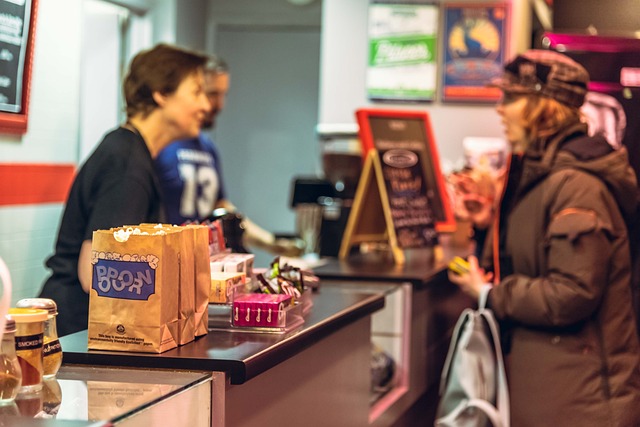By Lynne Laba, Head of U.S., Communisis Vox
It’s no easy task to measure return on investment (ROI) at a retail point-of-sale (POS). It’s not just about counting how many units were sold from an in-store display. A brand needs to monitor engagement to understand if consumers are intrigued. They must consider subtleties, like if a shopper didn’t buy this time, were they influenced enough to do so in the future? There are other factors to weigh, too, ranging from procurement processes to supply chain logistics.
There’s a lot on the line when it comes to effectively gauging POS ROI. Determining placement and investment tops the list, so knowing how much to spend and where it should go is key. Still, understanding if big displays are required, or if focusing time and money elsewhere would be wiser, only covers general performance. To be competitive today, brands must be able to distinguish such things as: What POS works best in a particular store? Does performance differ per day? Does it fluctuate by product type or market segment?
The problem is most fast-moving consumer goods (FMCG) organizations only have data on two points. Just understanding what POS was sent to a store and its cost – and what product was bought and its associated income – barely begins to scratch the surface.
Getting your arms around it
The good news is effectively measuring POS ROI is possible if tackled in the right way. There’s a lot going on at the POS, so it’s important that you’re able to cut through the clutter and identify and extract the right data.
That said, when attempting to get your arms around ROI, there are a few things to consider. Foremost, did the POS display make it to the store and onto the floor? Was it stocked adequately and in the time envisioned? Did the display have the creative impact you had hoped for in the original concept? Did consumers interact with it and enter the awareness, consideration or buying phase?
While there’s nothing new about such data gathering challenges, being able to do so at scale has proven very difficult. And the fact is, it’s labor intensive, the data can be hard to quantify, and it’s particularly difficult to do this across multiple stores in varied markets.
Gauging ROI at the POS
It’s not costly or hard to track delivery of POS to a store. Proximity-based solutions like ibeacons and QR codes – which allow consumers to engage with brands and make purchases – can provide a range of ROI tracking. Even so, this is limited to those who are comfortable using their mobile devices for that purpose.
Some brands are now enlisting artificial intelligence (AI). In one example, a company now uses AI to provide policies and regulations required for safe, reliable and responsible automated transportation. With closed-circuit television (CCTV) as input data, images can be interpreted at scale, illustrating how people make decisions and behave when behind the wheel. The system then identifies and uses that learning for the management of autonomous vehicles.
Many retailers have security cameras and can view in-store activity in a convenient digital format. Others are able to leverage crowd-sourced images to see POS displays and shoppers interacting with them. By linking that to product sales, you can understand the investment of what people really saw, as well as its generated income. With this dataset in hand, users can ask an AI solution whatever they like when it comes to performance measurements.
Measuring up
There’s no single answer for calculating ROI at POS and tracking performance at scale – but it can be measured. For instance, a brand can choose three stores, do a one-off but deep research project, and use that as a baseline for projecting other store behavior. Then again, you could employ technology like AI for handling mass measurement, but remember, that also requires massive data inputs.
In general, try not to track ROI on a quarterly basis, and opt instead to measure over a longer period. The most meaningful guide would be customer lifetime value (CLV). Also, remember that one-off campaigns won’t show the ongoing sales volume produced outside of it. It also won’t reflect additional shopper purchases created by the campaign, a situation referred to as the halo effect.
Regardless, understanding POS placement can enable a company to “measure up.” That means printing less, saving more and making investments with the right stores to drive sales. What’s more, it gives shoppers, faced with choices, the right information and a far better experience.
About the author

Lynne Laba is head of U.S. for Communisis Vox
Related Articles

The New Frugality: How Inflation and Tariffs Are Reshaping Consumer Spending
One of the most telling shifts is how shoppers approach decision-making. Where convenience once dominated, consciousness now plays a larger role. People are researching more before making a purchase, comparing prices across multiple platforms, and questioning whether they really need the product in the first place.

Embracing new concepts vs the return to brick-and-mortar
Balancing the return to physical retail and the development of new technologies to enhance customer experience and drive operational efficiency for long-term success.
Enartis to Acquire Parsec in Winemaking and Retail Deal
The deal will bring Enartis and Parsec together to help wineries manage every part of production more easily and efficiently, from grape to bottle.

A Practical Guide to Retail AI Use Policies for Retailers and HQ Teams
AI can bring new opportunities for retailers, but this innovation must come with responsibility.


 for the latest news and job opportunities in retail tech
for the latest news and job opportunities in retail tech 